Let’s begin a new retrospective that will accompany us for quite a while.
Much like the villain origins retrospective, I will be looking at the first appearance of superheroes, going in chronological order as much as I can.
As far as superheroes go, there’s no way around it: Superman is the first one, defining our conception of what a superhero even is.
But there ARE what we can call “proto-superheroes”.
I’ve already looked at a DC character that pre-dates Superman by three years, with 1935’s Doctor Occult being the earliest recurring original character that is still part of the DC Universe.
But the origins of superheroes go much, much further back than even 1935.
PROGENITORS
Gilgamesh is sometimes namedropped as the first fictional hero, with the Epic of Gilgamesh dating back to somewhere around 2100 BC. But while he is actually a superhero in Marvel Comics (he’s one of the Eternals), if you actually read the poem he’s AT BEST an anti-hero.
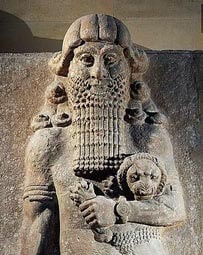
A more direct progenitor would be Hercules (or Herakles if you want to be Greek about it), whose legendary origins are impossible to pinpoint but he’s at the very least from 600 BC.
He’s ALSO a legitimate superhero at Marvel, while at DC he’s a villain. He’s also significant for being responsible for the strength of the original Captain Marvel (he’s where the H in “Shazam!” comes from).

The oldest progenitor of the non-powered heroes is probably Robin Hood, from around the 13th century.
Weirdly enough, I don’t think Robin Hood is an actual character in Marvel… but he HAS met Batman, in 1946’s Detective Comics #116.
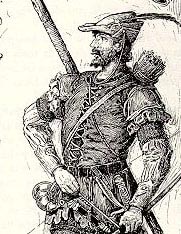

And we might also have to consider Spring-Heeled Jack. Originating as the urban legend of some kind of monster, between the late 1800s and early 1900s he was re-interpreted as a sort of vigilante in a few “penny dreadful” serials (the one pictured is from 1904).

The other Batman progenitor from the late 1800s is Sherlock Holmes, debuting in 1887.
Obviously not a superhero, but… he’s a guy who handles cases the authorities can’t resolve, he has a sidekick, he has an arch-nemesis (although Moriarty only shows up twice in the Conan Doyle stories)… street level heroes owe the origins of many traits to Sherlock Holmes.
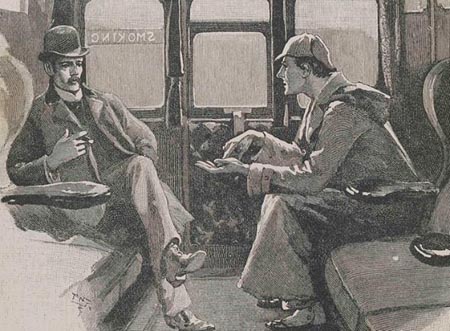
Plus he’s met Batman as well, because EVERYONE has met Batman at some point.
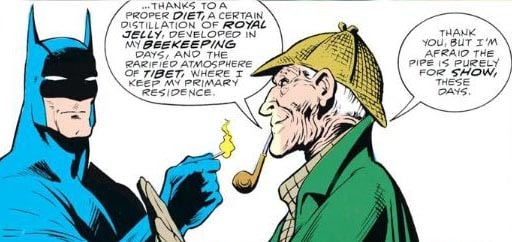
EARLY 20TH CENTURY
1902: Hugo Hercules
Creator: Wilhelm Heinrich Detlev Körner
An incredibly obscure character to say the least. His newspaper strip on the Chicago Tribune only lasted for 17 strips, from September 7th 1902 to January 11th 1903. His creator left comics entirely and went on to become a painter.
But considering Hugo Hercules is a guy with super-strength that went around helping people, he’s arguably the very first superhero.
He even has TWO catchphrases: “Just as easy” and “I could do this forever”.

1903: the Scarlet Pimpernel
Creator: Baroness Emma Orczy
The originator of most secret identity tropes showed up in a 1903 play, followed by his first novel in 1905. Since then he’s faded from public consciousness apart for being one of the major inspirations for Batman, and few people remember he was created by a woman.

1911: Nyctalope
Creator: Jean de La Hire
This French pulp hero is all kind of nuts. He’s arguably the first cyborg in literature (yes, really), having an artificial heart and super-senses including night vision (hence the name, which could roughly be translated to “Night-walker”).
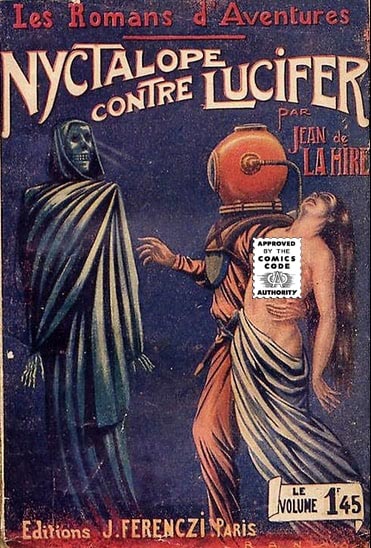
There are several reasons why he’s unknown. Most of his novels are considered lost work, and the majority of them have never been translated into English.
But the main reason is probably the fact that Jean de La Hire later became a supporter of the Nazi occupation of France during WWII.
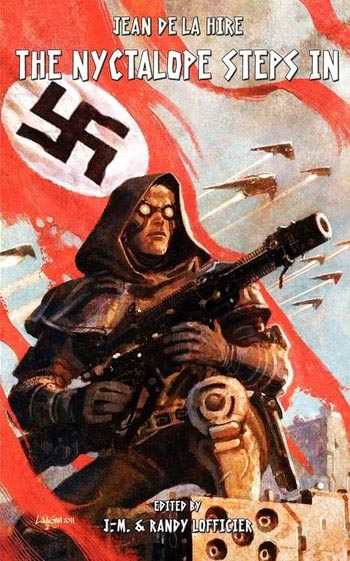
1912: Tarzan
Creator: Edgar Rice Burroughs
Forget everything you know from popular culture, it’s a small part of the source material.
The Tarzan from the books is super-strong and super-smart (he learns something like thirty languages), becomes immortal and basically an international superspy. Yeah, Tarzan books are WEIRD.

1914: Jimmie Dale, the Gray Seal
Creator: Frank L. Packard
I haven’t read anything about this guy. At first glance he seems to be yet another “playboy by day, masked crimefighter by night” character like a million other characters inspired by the Scarlet Pimpernel.
But he IS notable because he appears to be the first hero with a secret hideout, so in a way he’s another Batman precursor.
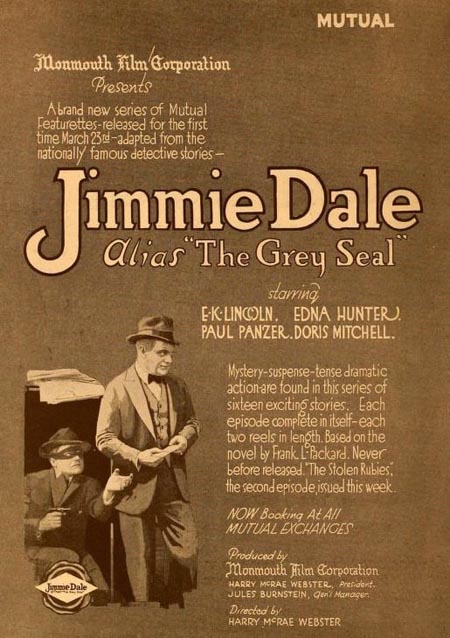
1917: John Carter
Creator: Edgar Rice Burroughs
Most likely inspiration for characters having super-strength thanks to the lower gravity of another planet, so Superman owes at least something to him.
He was also immortal for absolutely no reason given in the story.
No, seriously.
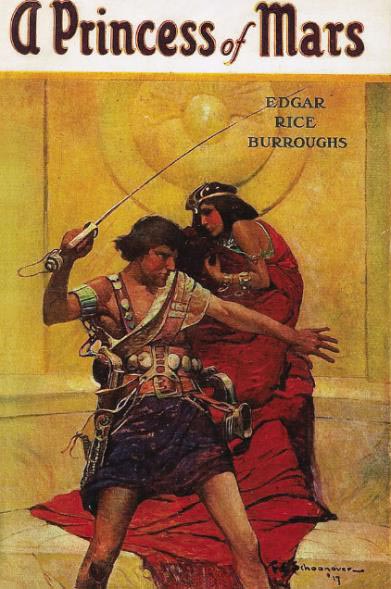
1919: Zorro
Creator: Johnston McCulley
I trust that I don’t really have to talk about this one.

1929: Buck Rogers
Creator: Philip Francis Nowlan
While his influence is arguably more on science fiction in general than on superheroes, Buck Rogers did directly inspire several characters.
His newspaper strip lasted from 1929 all the way up to 1967.
Interestingly for superhero fans, the last artist was George Tuska, from 1959 to 1967.

1929: Popeye
Creator: E.C. Segar
Stretching the superhero definition, sure, but he deserves a mention. At least for the fact that DC has its own version of Popeye with Captain Strong.
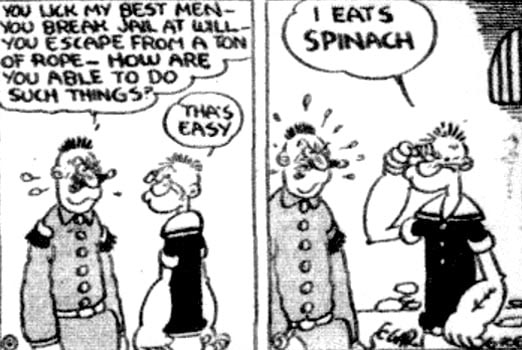
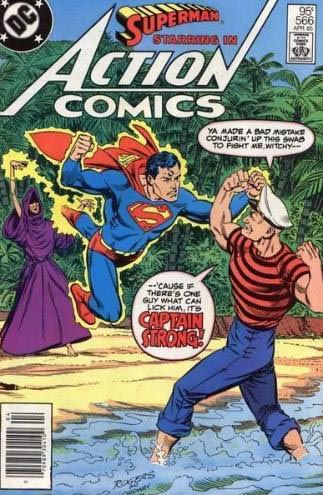
THE 1930s
1930: Hugo Danner
Creator: Philip Wylie
While the name is not particularly well-known, he’s the protagonist of the novel “The Gladiator” that is a direct inspiration for Superman (although Siegel and Shuster never said it out loud).
The similarities with the Golden Age Superman are striking. His super-strength and invulnerability closely resemble those of the first few Superman stories, although Danner isn’t born with his powers: his father created an “alkaline free-radical” serum that gave him “the proportionate strength of an ant and the leaping ability of the grasshopper”.
If that makes you think of Spider-Man, also consider that the book includes a scene where Danner gets his first money by defeating a hulking wrestler.
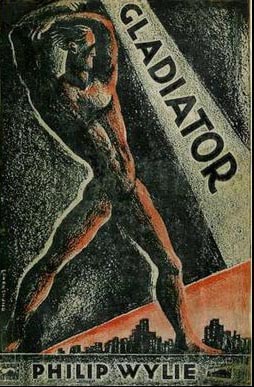
1930: 黄金 バット (Ōgon Bat)
Creator: Takeo Nagamatsu and Suzuki Ichiro
Literally meaning Golden Bat, known in other countries also as Phantaman or Fantomas or Fantaman thanks to his 60s anime adaptation, this one is WEIRD.
He originates in kamishibai (紙芝居, “paper play”), a Japanese street theater popular during the Great Depression.
A being from ancient Atlantis sent to the present day to fight evil with super-strength, invulnerability and flight. This guy is so old that he not only he predates Superman, Golden Bat predates manga.
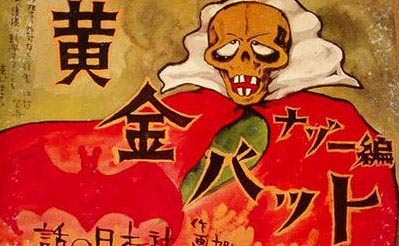

1930: The Shadow
Creator: Walter B. Gibson (pen-name Maxwell Grant)
One of THE pulp heroes and THE Batman progenitor, no question about it. He’s also one of the many heroes of the 30s to originate in radio rather than comics or books.

And guess what? He ALSO met Batman.
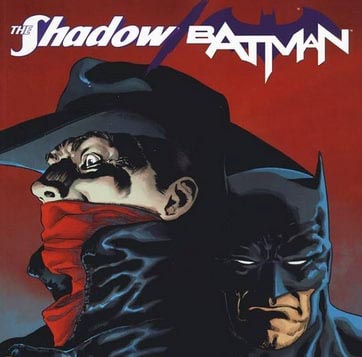
1931: Dick Tracy
Creator: Chester Gould
Most definitely NOT a superhero, but his influence on early superheroes is undeniable. Batman in particular, between the late 40s and early 50s was basically having Dick Tracy’s adventures while wearing a mask.
Also like Batman, Dick Tracy went completely off the rails in the 60s: his adventures switched from crimes and supervillains to space adventures, complete with Dick Tracy moving to the Moon and working with the local population. This was discontinued in 1969 after the Apollo missions made it even less believable then before, and Dick Tracy returned to Earth for good.
And as a testament to his marketability, as of 2023 the strip IS STILL GOING.
Even more impressively, Gould wrote and drew the strip until 1977.

1931: Chandu The Magician
Creator: Vera Oldham
The progenitor of magic superheroes, this radio drama hero was the explicit inspiration for Doctor Strange according to Stan Lee.

1932: Conan the Barbarian
Creator: Robert E. Howard
Not a superhero of course, AT ALL, but a lot of lore is inspired by his world (ESPECIALLY at Marvel, where Conan is literally canon).
Also, the amount of censoring I have to do gives you an idea of how horny pulps could get. Conan himself doesn’t seem to ever get the cover in the original magazines.

1933: Doc Savage
Creator: Kenneth Robeson
The OTHER pulp hero. If you have any doubts that he’s an inspiration for Superman… his secret lair is called the Fortress of Solitude.

Weirdly enough, Doc Savage is KIND OF in continuity with Marvel, having crossed over with Spider-Man and the Thing.
The latter is fitting, since Doc Savage operated from the top of a skyscraper that might have been the inspiration for the Baxter Building.
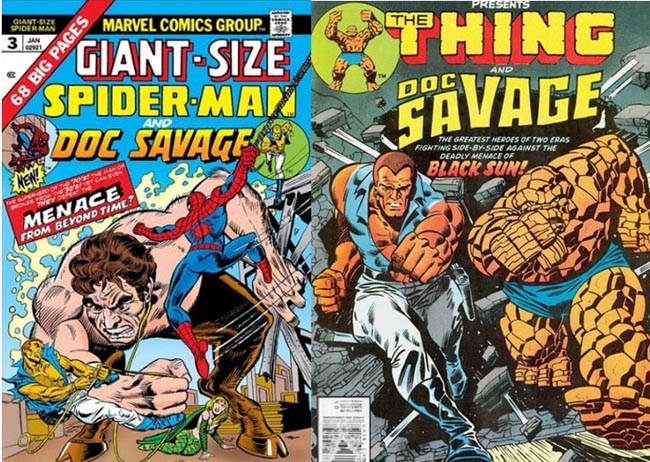
1933: Lone Ranger
Creator: George W. Trendle
While there are countless cowboy predecessors, the Lone Ranger’s masked identity definitely has an impact on how superhero work.

1933: The Spider
Creator: Harry Steeger
Created as a direct competitor to the Shadow (or perhaps a knockoff, I mean just look at him). If nothing else, Stan Lee named him as an inspiration for Spider-Man’s name.

1934: Mandrake The Magician
Creator: Lee Falk
The OTHER progenitor of basically every magic superhero. His DC equivalent will debut on the same issue of Superman (we’ll get to it): Zatara, better known today as the father of Zatanna, is visually indistinguishable from Mandrake.

1934: Flash Gordon
Creator: Alex Raymond
Created as a direct response to the popularity of Buck Rogers, the Flash Gordon newspaper strip lasted all the way until 2003 (!!!).
It has been suggested that Superman’s costume was based on a uniform worn by Flash Gordon, and even that the first Batman cover is based on a Flash Gordon drawing.
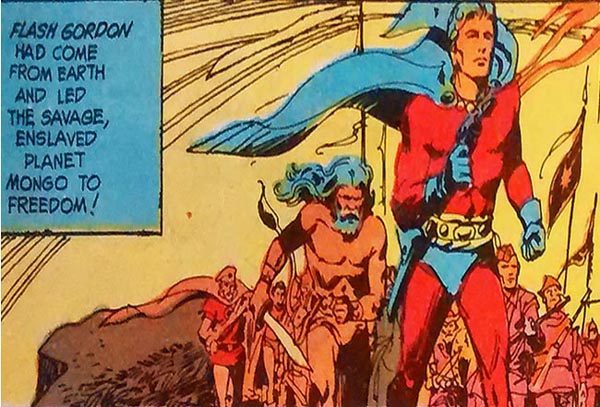
1935: Doctor Occult
Creator: Jerry Siegel and Joe Shuster
I’ve already covered his first story. But now you get a better sense of how much he predates Superman and what is even older than him.

1936: the Clock
Creator: George Brenner
Credited as “the first fully-masked hero to appear in American comic books”. I don’t know anything else about him, but I thought it was worth mentioning.

1936: Green Hornet
Creator: George W. Trendle and Fran Striker
While he might have been a minor inspiration for Batman, the fact that he has a sidekick (although not a child) might be significant for the creation of Robin.
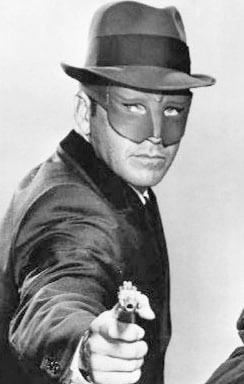
1936: Domino Lady
Creator: Lars Anderson
One of the few heroines from pulp books, who still occasionally gets a few comics here and there today. The fact that she was first published on “Saucy Romantic Adventures” probably tells you why she endured…
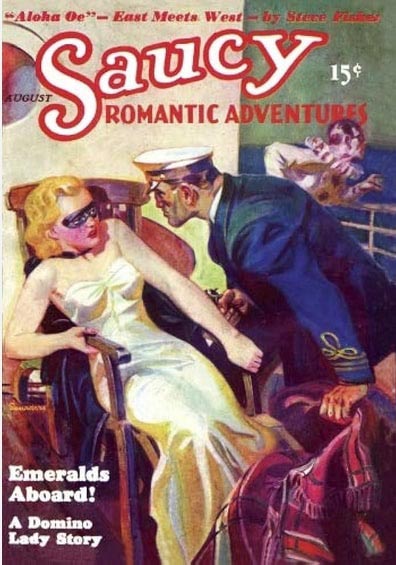
…but it’s not like her moving to “Mystery Adventure Magazine” played down the fanservice.

1936: The Phantom
Creator: Lee Falk
The jungle setting is the only reason why he’s not typically considered 100% a superhero.
As testament to his longevity, as of 2023 the original strip IS STILL GOING.
Lots of familiar names for superhero fans have worked on the strip: from Carmine Infantino, to Paul Ryan (best known for his Fantastic Four) and Mike Manley (co-creator of Darkhawk).
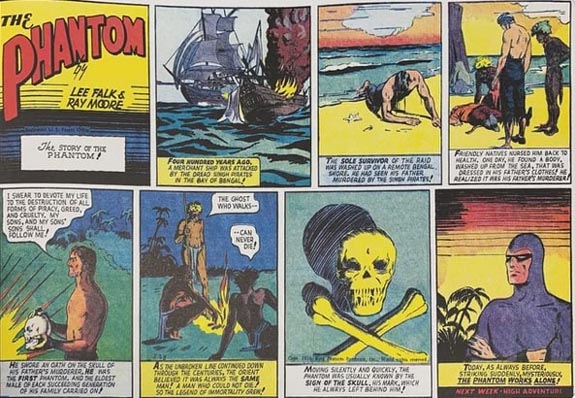
1937: Olga Mesmer
Creator: Watt Dell (maybe?)
“The Girl with the X-Ray Eyes” ran as a comic strip for “Spicy Mystery Stories” from 1937 to 1938. She is arguably the first superheroine with actual powers.

In addition to having X-Ray vision long before Superman, she also had super-strength!
And her origin is suitably bonkers: her mother was an alien from Venus who ruled an underground kingdom on Earth (just go with it), and Olga gets her powers for being exposed to radiation by her mad scientist father. Specifically, she was exposed to “soluble X-Rays”, whatever the heck that means.

I couldn’t find any image of Olga where her clothes aren’t ripped. She WAS published in “Spicy Mystery Stories” after all.
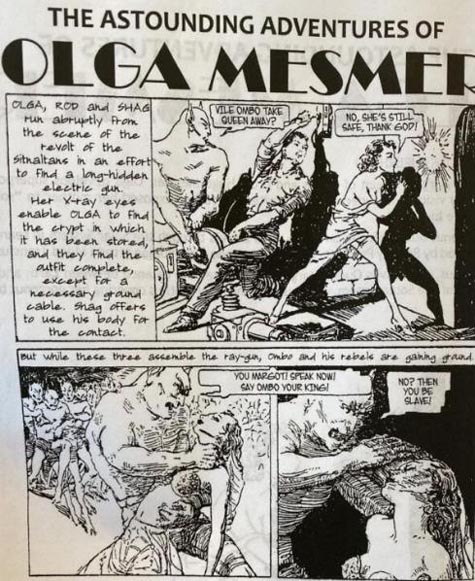
1938: Dick Fulmine
Creator: Carlo Cossio and Vincenzo Baggioli
Not a superhero in the slightest, but when else am I going to mention him?
Debuting only three months before Superman, this character is nearly unknown outside of Italy. Even in Italy itself, few comic book readers know him. And for a good reason!
The adventures of this undercover agent of the Chicago police (whose last name means Lightning) started out as a regular pulp… until the Fascist Ministry of Popular Culture (yes that was a thing in the 30s) and supposedly even Benito Mussolini pressed the creators to change the character to resemble Mussolini himself.
He ended up fighting such threats as the racist caricature “Yellow Panther”…
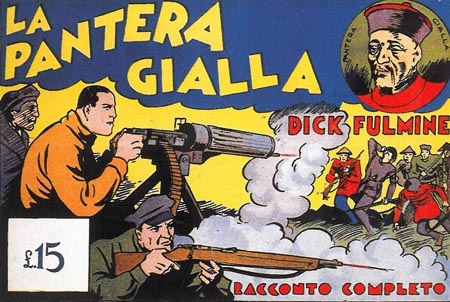
…and black people. Seriously, the title of this one is “N##ger rebellion”.

(there are linguistics reason for which it might not have been used in a racist way, and if it was anything else I could give it the benefit of the doubt, but since it was literally sponsored by actual fascists I’m not giving it a pass)
So, uhm, yeah. “Fascist Superman” was a thing before Superman, and he spent his adventures straight up punching Asians, blacks and jews.

The fascist undertones (and over-tones) were removed after WWII and the character was published until 1955, being the only character from the era that was allowed to continue his adventures.
Mostly because, unlike Nyctalope’s creators, Cossio and Baggioli were not exactly enthusiastic supporters of what they were pushed to do.
I recognize that MOST of these would not be considered superheroes today (DEFINITELY not Dick Fulmine). But it really goes to show that Superman didn’t come out of nowhere: there was definitely something brewing in the late 30s.
If not Siegel and Shuster, SOMEONE would have codified the first superhero in those years.

I have no doubt that you’re perfectly aware of Richard Benson, the Avenger, and didn’t include him because it’s already a long list, but I always liked him so I’ll give him a plug here. He was another pulp hero that later went on to have his own DC series – maybe even a couple of series. I only know for sure that he had the short-lived Justice Inc. series in the 70s that ran for four issues, three of which with art by Jack Kirby. I believe Denny O’Neill wrote the series, though I may be wrong. Not sure if he ever personally met Batman, but he did meet the DC version of the Shadow.
The Avenger took a lot of inspiration from Doc Savage, such as working with a quasi super team of individuals with specific sets of skills and having his writer saddled with the same house pen name as Doc’s. He was much pissier than Doc in general, and had the super power to mold his face into any likeness, because the muscles in his face were dead from the shock of his wife and daughter disappearing during a plane flight.
He barely didn’t make the cut because he’s from 1939 and I focused on characters that showed up before Superman. But yes he definitely has an impact on early superheroes.
I think what makes the first superhero so difficult to classify is that the idea of a superhuman being who goes around doing good things has been around since the dawn of humanity. There were definitely superheroes before Gilgamesh and Hercules, it’s just that they’ve been lost to time, either because their stories were never written down or because the writings were lost.
It’s almost needless to say that a lot of these characters turned up in League of Extraordinary Gentlemen. And if not there, Planetary.
Hey this is a great new retrospective. Do you intend to only cover individual heroes or will you also look at important heroes who debuted in teams ? Like he Fantastic Four or the X-Men ?
I’ll also cover the teams. I’ll start with the Golden Age and proceed chronologically for a while, later on I might jump between the Golden and Silver.
It should also be noted that Superman’s alternate moniker “The Man of Steel” is derived from Doc Savage’s nickname, “The Man of Bronze”.
Hugo Danner appeared in both Marvel and DC Comics. First a one-time adaptation in “Marvel Preview” #9, back in 1976. Then Danner was retconned into DC Comics’ history as the biological father of Iron Munro, in 1989’s “Young All-Stars”.
Iron Munro was, of course, Roy Thomas’s post-Crisis Superman equivalent to use in retconned Golden Age Adventures, as were Flying Fox for Batman and Fury for Wonder Woman. Neptune Perkins and Tigress were pre-existing characters who he re-purposed to act as stand-ins for Golden Age Aquaman and Green Arrow.
Fantastic article and research!